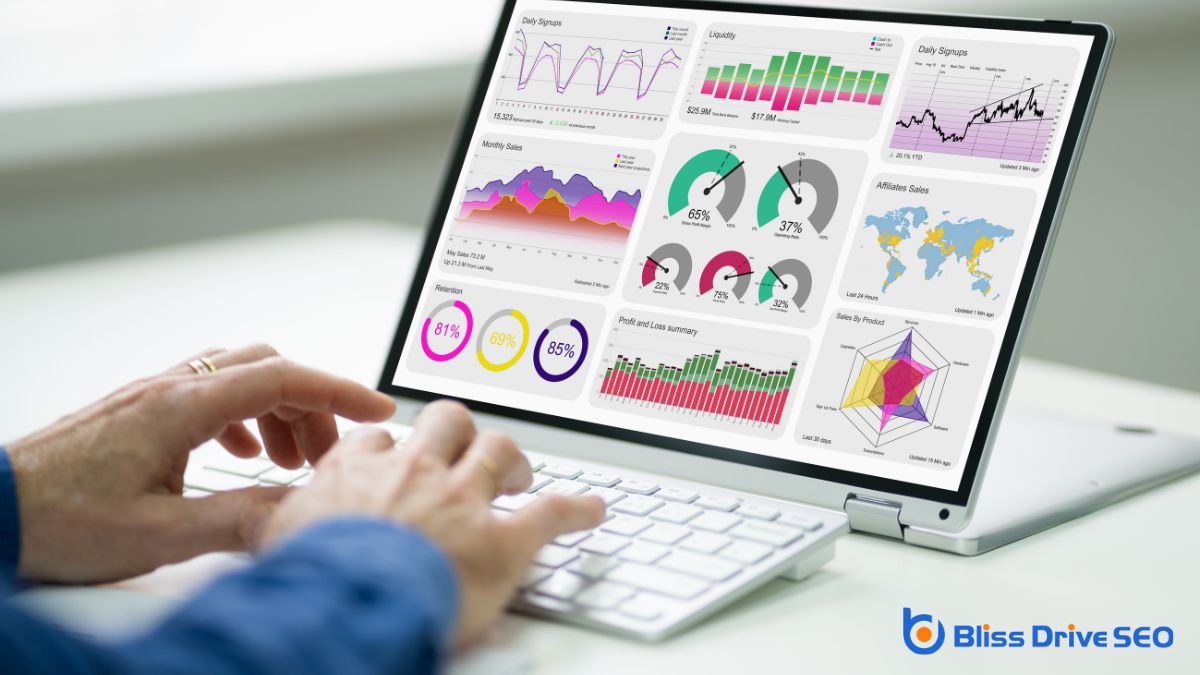Digital Marketing Services
Learn More About Us

When you're tackling conversion rateThe percentage of visitors who complete a desired action, such as making a purchase or filling out a... optimization, understanding key metrics is just the tip of the iceberg. You might wonder how tools like heatmaps and session recordings can reveal hidden patterns in user behavior or how A/B testingA method of comparing two versions of a web page or app against each other to determine which one pe... can guide your design decisions. But there's more to the story—what about the subtle insights from user feedback or the surprising revelations that come from analyzing user flowThe path users take through a website to complete a specific task or goal.? Each element plays a vital role, yet the question remains: how do you piece together these data points to craft a truly optimized experience? Let's explore this complex puzzle further.
Understanding key metrics is essential for effective conversion rate optimization. You need to grasp which metrics truly impact your conversion rates.
Start by focusing on the conversion rate itself—the percentage of visitors completing a desired action. Look at the bounce rate, which tells you how many visitors leave without interacting. A high bounce rate might mean your page needs improvements.
Consider average session duration; longer sessions suggest more engaged users. Monitor click-through rate (CTR)The percentage of users who click on a specific link or CTA. to see how often users click on your calls to action. Pay attention to the exit rateThe percentage of visitors who leave a website from a specific page, indicating potential issues wit..., indicating where visitors leave your site.
Funnel visualization helps identify where users drop off in the conversion process. By understanding these metrics, you'll pinpoint areas needing attention, driving better conversion outcomes.

To effectively optimize your conversion rates, utilizing analyticsThe systematic computational analysis of data or statistics to gain insights and support decision-ma... tools is essential. These tools provide insights into user behavior, helping you make informed decisions. By leveraging analytics, you can identify what's working and what needs improvement.
Here's how you can use these tools:
While analytics tools give you insights into user behavior, A/B testing empowers you to take action by experimenting with different elements of your website.
It allows you to compare two versions of a webpage to see which performs better regarding conversion rates. Start by identifying a single variable to test, like headlines, images, or call-to-action buttons.
Create two versions: A (the control) and B (the variation). Direct equal traffic to both and monitor which one drives more conversions.
A/B testing helps you make data-driven decisions, reducing guesswork. It lets you understand what resonates with your audience, ultimately optimizing your website for better results.
How do you truly know what your users think about your website? Gathering user feedback is key to understanding their experiences and improving your conversion rate optimization.
By engaging directly with your audience, you can uncover valuable insights. Here's how you can effectively gather user feedback:
When you implement heatmaps, you can visualize user behavior and see exactly where visitors click on your site.
Identifying these click patterns helps you understand what's working and what isn't.
With this insight, you can optimize your page layout to boost conversion rates effectively.
Ever wondered how users navigate through your website? Implementing heatmaps can offerThe specific product or service being promoted by affiliates. valuable insights into user behavior. They allow you to see where visitors click, scroll, and spend the most time. By visualizing these interactions, you can optimize your site for better conversion rates.
Here's how heatmaps can help you understand user behavior:
Understanding user behavior through heatmaps can greatly enhance your optimization strategy.
To truly harness the power of heatmaps, focus on identifying click patterns. These patterns reveal where users are engaging most on your page, helping you understand how they interact with your content.
By analyzing these clicks, you can pinpoint which elements attract attention and which ones users ignore. It's vital to understand these patterns as they can highlight areas that might need improvement or confirmation that your design choices are working.
Heatmaps give you visual clarity, showing you hot and cold spots—areas where users click frequently or not at all.
Use this data to assess if your call-to-action buttons are effective or if essential information is easily accessible. By identifying click patterns, you're better equipped to make informed decisions to enhance your website's performance.
Although optimizing your page layout is essential, implementing heatmaps can greatly streamline this process.
Heatmaps provide visual insights into how users interact with your site, helping you make informed decisions quickly. To make the most of heatmaps, consider these steps:

Why is understanding user behavior essential for optimizing conversion rates? It's the key to revealing insights into what drives visitors to take action on your site.
By analyzing how users interact with your content, you can identify obstacles in their journey and opportunities for improvement. Observing user behavior helps you tailor experiences that align with their needs and expectations.
You can utilize tools like heatmaps and session recordings to see where users click, scroll, and linger. This data reveals which elements capture attention and which might be ignored.
Additionally, segmenting users based on behavior allows you to personalize messaging and offers, enhancing relevance. Ultimately, by understanding user behavior, you can make informed decisions that boost engagement and increase conversion rates.
To effectively analyze conversion rate optimization, you need to leverage analytics tools and strategies actively. Use heatmaps and session recordings to spot bottlenecks and analyze conversion funnels to identify where users drop off. Set up specific goals and events for precise measurement of user actions. Conduct A/B testing to gain data-driven insights and continuously improve the user experience. By gathering user feedback and analyzing behavior, you can make informed design choices that enhance conversion rates.
